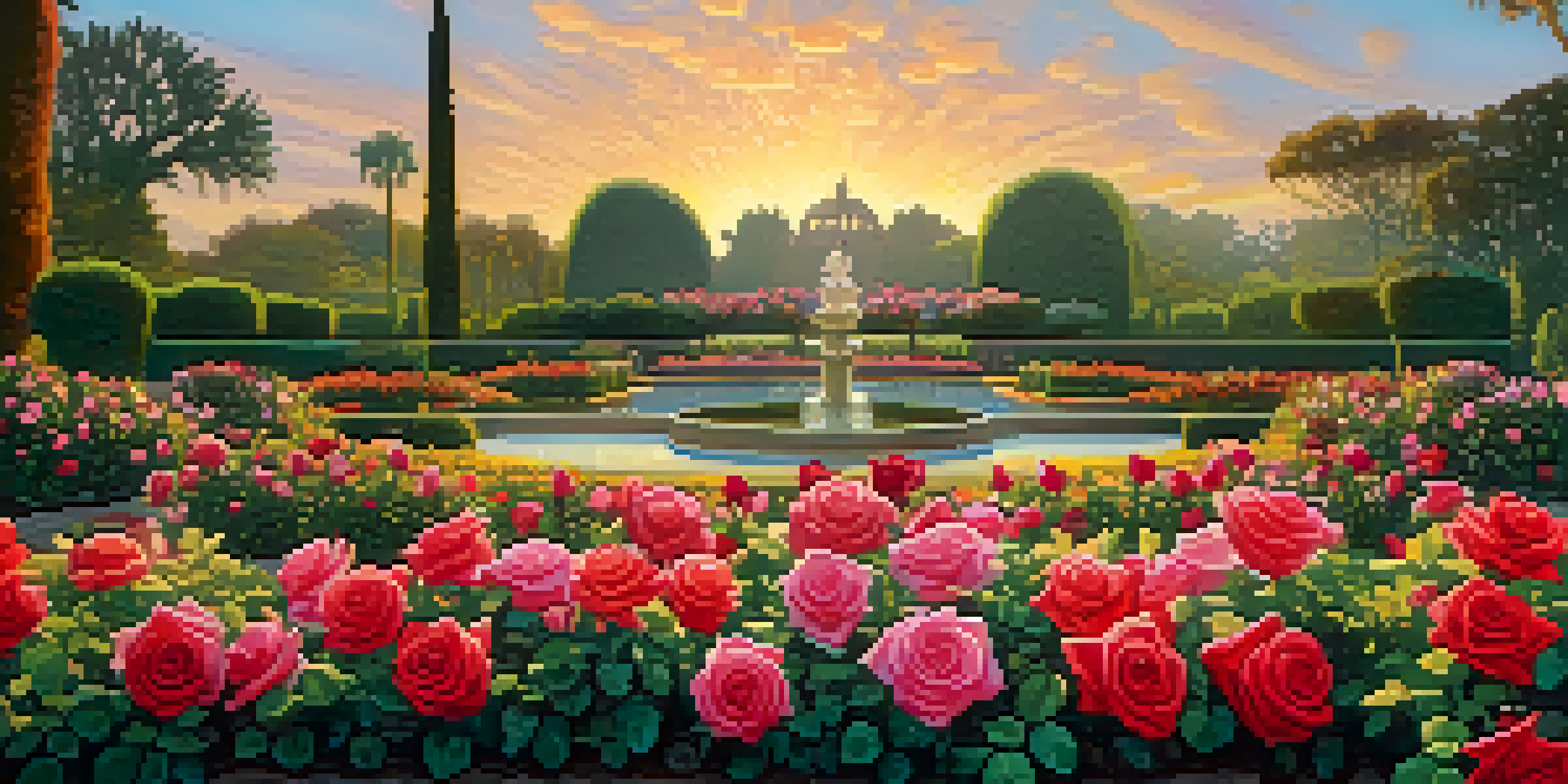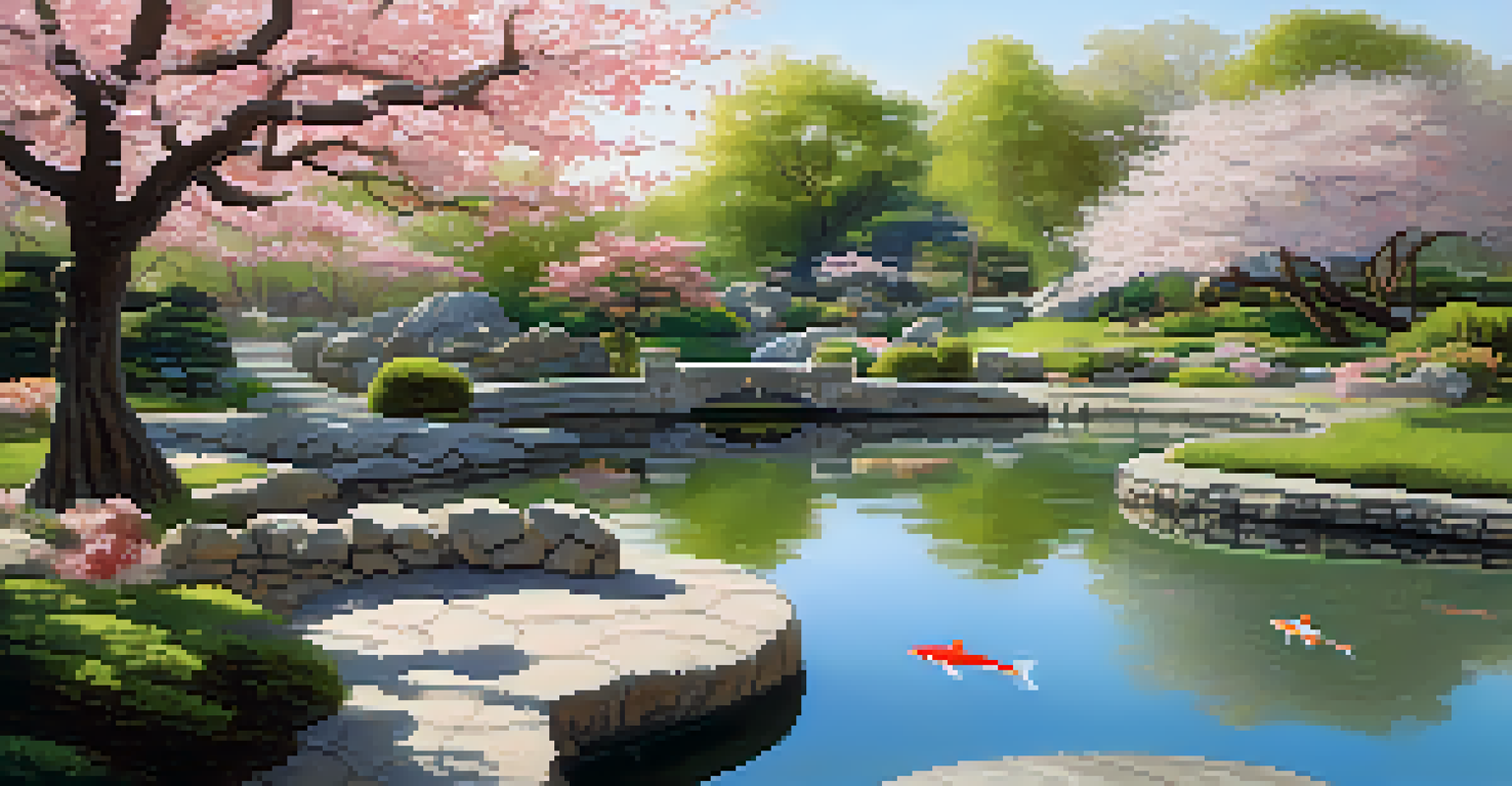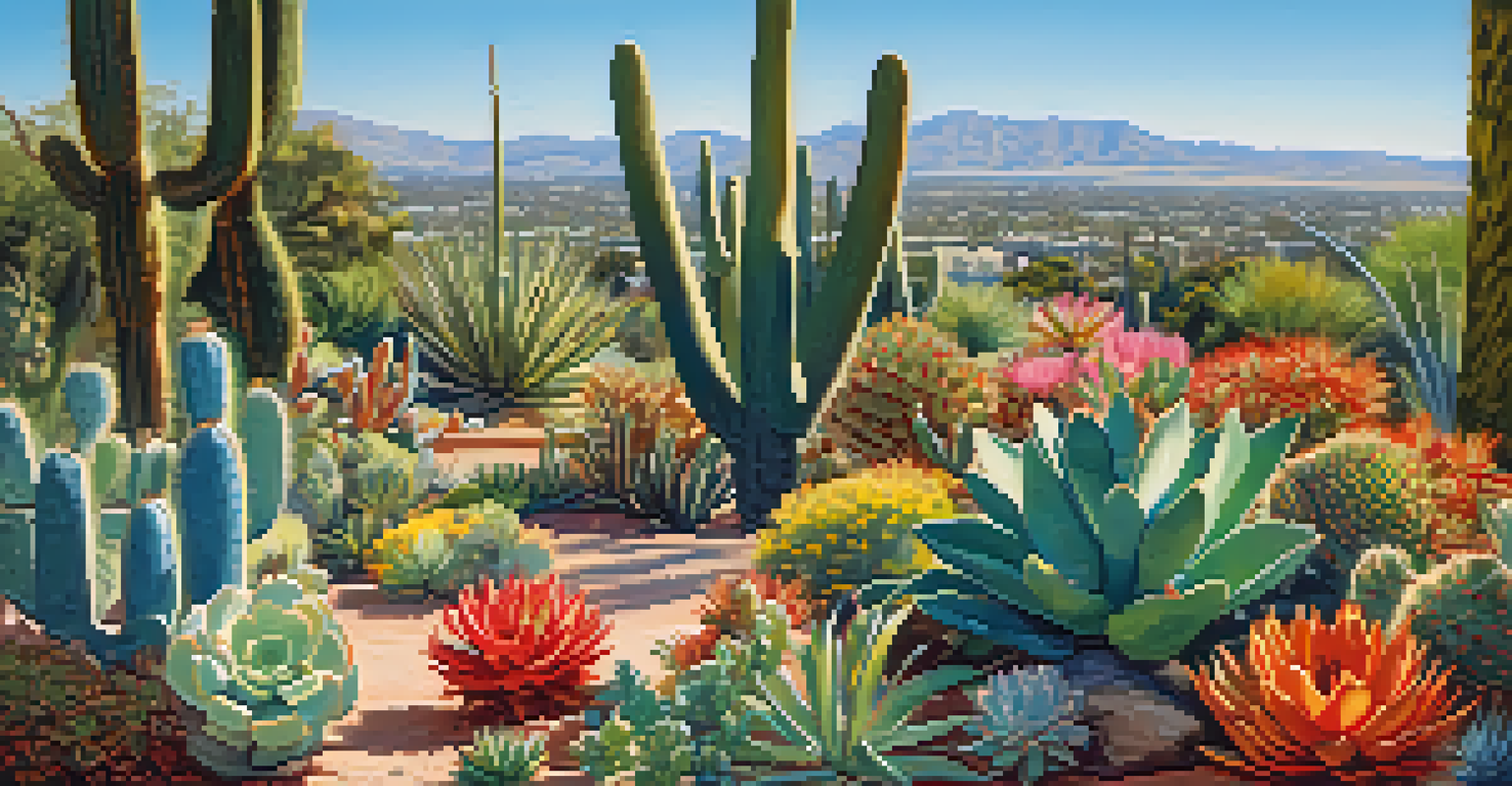Balboa Park's Gardens: Nature's Beauty Meets Cultural Heritage

Introduction to Balboa Park's Natural Wonders
Balboa Park is not just a cultural hub; it's a living tapestry of gardens that celebrate both nature and heritage. Nestled in San Diego, this park boasts over 1,200 acres filled with lush landscapes, diverse plant species, and stunning floral displays. Each garden tells a story, inviting visitors to experience beauty in various forms while connecting with the park's rich history.
In every walk with nature one receives far more than he seeks.
As you wander through Balboa Park, you'll quickly find that each garden has its own unique personality. From the vibrant colors of the Botanical Building to the serene ambiance of the Japanese Friendship Garden, there's something for everyone. These gardens provide a peaceful retreat from the hustle of city life, making them perfect spots for relaxation and reflection.
Moreover, the gardens are not just visually stunning; they also play a vital role in conservation and education. Many of them focus on native plants and sustainable practices, helping visitors understand the importance of preserving our natural environment. This balance of beauty and ecological awareness makes Balboa Park’s gardens truly special.
The Botanical Building: A Floral Wonderland
The Botanical Building is a centerpiece of Balboa Park, showcasing an incredible collection of plants from around the world. Constructed in 1915, this architectural marvel features more than 2,100 permanent plants, including orchids, ferns, and tropical foliage. Visitors often find themselves enchanted by the vibrant colors and delightful scents that fill the air.

One of the best parts about the Botanical Building is its commitment to seasonal displays. Throughout the year, the garden transforms, showcasing different plants and flowers that bloom with the changing seasons. This constant evolution keeps the experience fresh, encouraging repeat visits to see what’s new and blooming.
Balboa Park: Nature Meets Culture
Balboa Park's gardens beautifully intertwine natural beauty with cultural heritage, inviting visitors to explore and learn.
Additionally, the Botanical Building often hosts special events and educational programs, making it an interactive space for all ages. Whether you're a seasoned gardener or a casual visitor, there’s always something to learn about horticulture and plant care, enhancing your appreciation for the natural world.
Japanese Friendship Garden: A Cultural Oasis
The Japanese Friendship Garden is a serene retreat that beautifully embodies the principles of Japanese aesthetics and culture. Designed to promote harmony and tranquility, it features koi-filled ponds, serene pathways, and meticulously landscaped gardens. This space invites visitors to slow down and truly immerse themselves in nature's beauty.
Nature does not hurry, yet everything is accomplished.
The garden is not just a visual treat; it also showcases traditional Japanese practices, including bonsai cultivation and tea ceremonies. These cultural elements enrich the experience, providing a glimpse into Japan’s rich heritage and the significance of nature in its culture. It’s a beautiful reminder of the friendship between San Diego and its sister city, Yokohama.
Moreover, seasonal events like cherry blossom festivals and moon-viewing celebrations create a vibrant community atmosphere. These gatherings help visitors connect with one another while fostering an appreciation for Japanese traditions, making the garden a cultural hub as much as a natural sanctuary.
Desert Garden: A Unique Ecosystem
The Desert Garden is a showcase of the resilience and beauty found in arid landscapes. Home to more than 1,600 plants, including cacti, succulents, and drought-resistant flora, this garden offers a fascinating insight into desert ecosystems. It's a reminder that beauty can thrive even in the most challenging environments.
As you stroll through the Desert Garden, you'll encounter a variety of textures and colors, from the striking spines of cacti to the soft blooms of desert wildflowers. This diversity highlights the importance of these plants in their ecosystems and their adaptability to harsh conditions. It’s an eye-opening experience for anyone interested in the wonders of nature.
Diverse Gardens for Every Interest
From the vibrant Rose Garden to the serene Japanese Friendship Garden, each garden offers a unique experience that caters to varied interests.
In addition, the Desert Garden emphasizes sustainable gardening practices, teaching visitors how to create beautiful yet water-efficient landscapes at home. By showcasing these drought-resistant plants, the garden promotes awareness about water conservation, making it not only a beautiful sight but also an educational resource.
Rose Garden: A Symbol of Love and Beauty
The Rose Garden at Balboa Park is a stunning display of color and fragrance, making it a must-visit for flower enthusiasts. With over 1,600 rose bushes representing more than 130 varieties, this garden is a celebration of one of nature’s most beloved flowers. The vibrant blooms create a picturesque landscape that attracts photographers and romantics alike.
This garden serves as an excellent example of the care and dedication that goes into maintaining such a vibrant space. Gardeners meticulously tend to the roses throughout the year, ensuring they flourish and bloom beautifully. The seasonal color changes provide a delightful experience for visitors, making each visit feel unique.
Additionally, the Rose Garden often hosts special events, including workshops on rose care and community gatherings. These activities not only enhance the garden's charm but also foster a sense of community among visitors, making it a place where people can come together to share their love for flowers.
The California Native Plant Garden: A Local Treasure
The California Native Plant Garden highlights the beauty and diversity of the state's native flora. This garden is dedicated to showcasing plants that thrive naturally in California's unique climate, promoting biodiversity and ecological awareness. It serves as a living museum, educating visitors about the importance of preserving local ecosystems.
As you explore the garden, you’ll discover a variety of native plants, from vibrant wildflowers to towering grasses. Each plant plays a crucial role in supporting local wildlife, including birds, butterflies, and bees. This interconnectedness illustrates the importance of native plants in maintaining healthy ecosystems.
Focus on Conservation and Education
The gardens emphasize sustainable practices and native plants, fostering environmental awareness and education among visitors.
Furthermore, the garden emphasizes sustainable gardening practices that visitors can adopt in their own yards. By encouraging the use of native plants, it promotes water conservation and reduces the need for chemical fertilizers and pesticides. This makes the California Native Plant Garden not just a beautiful space but also a vital resource for environmental sustainability.
Conclusion: Nature and Heritage Intertwined
Balboa Park’s gardens are more than just beautiful landscapes; they are vital parts of the park's cultural heritage. Each garden offers a unique experience, allowing visitors to connect with nature while learning about different cultures and conservation efforts. This harmonious blend of beauty, education, and cultural appreciation makes Balboa Park a truly special destination.
As you navigate through the various gardens, you’ll find that each one tells a different story, reflecting the diverse influences that have shaped the park over the years. This rich tapestry of nature and culture invites visitors to explore, learn, and create lasting memories. It’s a place where history is preserved, and the beauty of nature flourishes.

In conclusion, whether you're a local resident or a traveler, Balboa Park’s gardens offer a unique opportunity to immerse yourself in nature while embracing cultural heritage. So, grab your walking shoes, take a deep breath, and get ready to experience the enchanting beauty of Balboa Park’s gardens!